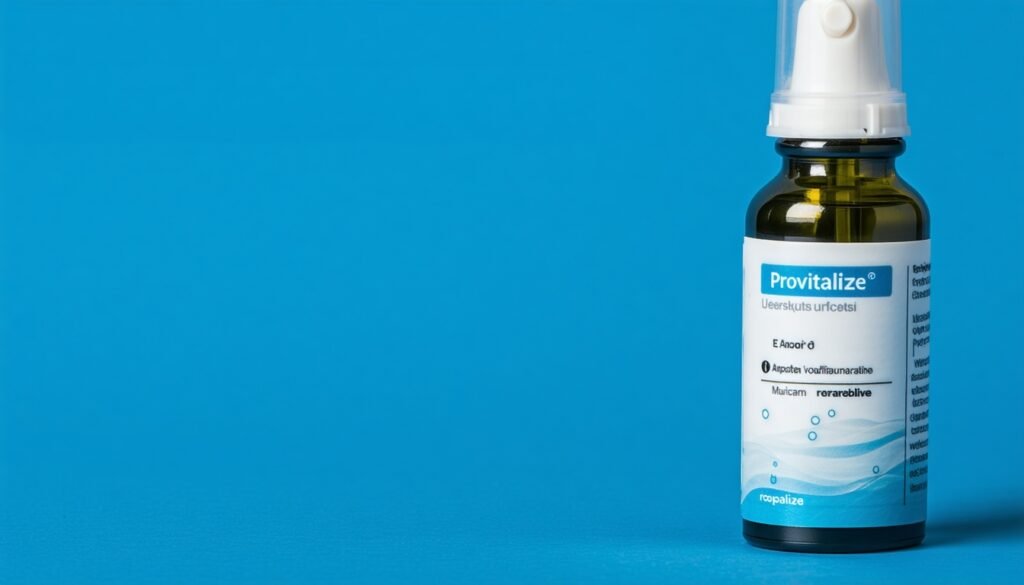Understanding Dental Implants
Dental Implant Basics
Dental implants are like the rockstars of tooth replacement. They don’t just fill the gap; they bring back the whole concert experience of having a natural tooth. These implants comprise three parts: the root, abutment, and crown. The root, usually crafted from titanium, is the part that gets cozy in your jawbone. The abutment is the middleman, connecting the root to the crown, the part you show off when you smile. The crown can be made from different materials, depending on your style and needs.
The first dental implant was placed in 1965, and since then, they’ve been the go-to for folks wanting a durable and natural-looking tooth replacement (Dentakay). Prices can vary, though, depending on the type of implant and how your mouth is doing health-wise.
Types of Dental Implants
There is a whole lineup of dental implants, each with unique features. Knowing the differences can help you pick the one that hits the right note.
Endosteal Implants
Endosteal implants are the hottest thing in the implant world. Made from titanium, they are implanted right into the jawbone, offering top-notch stability and long-lasting performance. They look and feel like the real deal, making them a fan favorite (Radiant Dental Care).
Subperiosteal Implants
Subperiosteal implants are the backup plan when your jawbone isn’t deep enough for the main act. Instead of going into the bone, they chill on top of it, under the gum. This means less surgery and a quicker recovery. They’re often used to keep removable dentures in place, giving you a snug fit without needing a bone graft.
Zygomatic Implants
Zygomatic implants are the underdogs, stepping in when there’s significant bone loss in the upper jaw. They anchor into the cheekbone instead of the jawbone, making them a solid choice for those who can’t support the usual implants. They offer a stable solution for tricky cases, helping folks with significant bone loss regain their smile (Radiant Dental Care).
For more on how dental implants compare to other options, check out our piece on dental bridge vs. implant. And if you’re crunching numbers, our guide on all-on-4 dental implant prices has you covered.
Factors Affecting Dental Implant Cost
Are you thinking about getting dental implants? Several factors can affect the price tag. Knowing these can help you make smart choices about your dental care.
Surgical Considerations
The nitty-gritty of the surgery is a biggie when it comes to cost. How tricky the procedure is, whether you need extra surgeries, and how skilled your dentist is can bump the price. For example, if you need a bone graft or a sinus lift before they can pop in the implant, that’s gonna cost you more.
Number of Implants Needed
Another factor is how many implants you need to restore your smile. One implant for a single missing tooth is cheaper than a whole bunch for a row of missing teeth (Dolan Dental). And if you’re fixing up front teeth, expect to pay more than for molars because matching the angle of the front jawline is a bit of a headache (Dolan Dental).
| Number of Implants | Estimated Cost (USD) |
|---|---|
| Single Implant | $3,000 – $4,500 |
| Multiple Implants (2-4) | $6,000 – $12,000 |
| Full Mouth Implants | $24,000 – $50,000 |
Type of Restoration Required
What kind of fix-up you need also affects the cost. You might need crowns, bridges, or dentures, each with its own price based on the materials and complexity.
- Crowns are usually for single-tooth replacements and are custom-made to look like real teeth.
- Bridges: These replace a few missing teeth and can be held up by implants or natural teeth. For more info, check out our article on dental bridge vs. implant.
- Dentures: If you’re going for a full-mouth makeover, implant-supported dentures might be cheaper than getting an implant for each tooth.
| Type of Restoration | Estimated Cost (USD) |
|---|---|
| Crown | $1,000 – $3,000 |
| Bridge | $3,000 – $5,000 |
| Denture | $7,000 – $15,000 |
Knowing these factors can help you better understand what your dental implant procedure might cost. For more details, click on our dental implants page. And if you’re worried about the price, check out options like dental loans and charitable programs to help cover the costs.
Dental Insurance and Implants
Coverage Overview
Dental insurance can be a lifesaver when it comes to covering the cost of dental implants. It usually covers cleanings, check-ups, X-rays, fillings, oral implants, surgery, and unexpected emergencies. However, how much it covers for implants depends on your specific plan.
Most plans follow a tiered model, often called the 100-80-50 payment model. Here’s the scoop:
- 100% for preventative care (think cleanings, exams)
- 80% for basic stuff (like fillings, extractions)
- 50% for the big-ticket items (crowns, implants)
| Procedure Type | Coverage Percentage |
|---|---|
| Preventative Care | 100% |
| Basic Procedures | 80% |
| Major Procedures | 50% |
Remember, dental insurance is usually separate from health insurance. However, health plans sometimes offer dental coverage as a bonus (Progressive).
Limitations and Exclusions
While dental insurance can help with the cost of dental implants, there are some catches. It usually excludes non-medical procedures, like cosmetic procedures and braces for adults.
Plus, most plans cap how much they’ll pay each year. Hit that limit, and you’re on your own for extra dental work.
| Limitation | Description |
|---|---|
| Elective Procedures | Not covered |
| Orthodontic Work for Adults | Not covered |
| Maximum Annual Benefit | Varies by plan |
Knowing these limits is key if you’re considering dental implants. It’s wise to check out your policy’s fine print and chat with your insurance provider to see what’s covered. Check out our guides for more on the differences between dental bridges and implants and their costs.
Knowing what your insurance covers and what it doesn’t can help you make smarter choices about your dental health and wallet. If you’re looking for more ways to cover costs, options like dental loans and charitable programs might be worthwhile.
Materials and Techniques
Implant Materials
Dental implants are made from various materials, each with benefits and price tags. The prominent players in the implant game are titanium and zirconia.
Titanium is the go-to material for dental implants. It’s like the superhero of the implant world—strong, reliable, and compatible with your jawbone. Titanium implants are tough cookies known for sticking around and doing their job well (Hiossen).
Zirconia: If you’re looking for something that blends in with your natural teeth, zirconia’s your guy. It’s metal-free, so if you’re sensitive to metals, zirconia’s your back. Plus, it’s strong and looks good (Dolan Dental).
Other materials, such as gold, stainless steel, and cobalt-chromium, are available but are not as popular. They might pop up in exceptional cases.
| Material | Perks | Common Uses |
|---|---|---|
| Titanium | Friendly with the body, tough, sticks around, high success rates | Most common for endosteal implants |
| Zirconia | No metal, blends in, strong, looks good | Alternative to titanium |
| Gold | Tough, friendly with the body, not as common | Special cases |
| Stainless Steel | Strong, tough, not as common | Special cases |
| Cobalt-Chromium | Strong, tough, not as common | Special cases |
Traditional vs. Alternative Techniques
When putting in dental implants, there are tried-and-true methods and newer tricks that cater to different needs.
Traditional Techniques:
Endosteal Implants are the bread and butter of dental implants. Usually made of titanium, they are placed right into the jawbone. They offer stability, last a long time, and look and work like natural teeth.
Subperiosteal Implants: These implants come to the rescue if the jawbone’s a bit shallow. They sit under the gum but above the jawbone, making the procedure less hassle and healing quicker. They often keep removable dentures in place (Radiant Dental Care).
Alternative Techniques:
Zygomatic Implants: These are the rare birds of dental implants used when there’s profound bone loss in the upper jaw. Instead of the jawbone, they anchor in the cheekbone, making them a solid choice for tricky situations (Radiant Dental Care).
All-on-4 Implants: This method uses four implants to hold up a whole set of teeth. It’s a wallet-friendly option for those needing a lot of tooth replacements and offers a speedier recovery than the old-school ways. For more on the cost, check out our article on all on 4 dental implant prices.
| Technique | What It Does | Common Uses |
|---|---|---|
| Endosteal Implants | Titanium implants placed in the jawbone | Most common, stable, long-lasting |
| Subperiosteal Implants | Implants under the gum but above the jawbone | Shallow jawbone, stabilizing dentures |
| Zygomatic Implants | Implants anchored in the cheekbone for severe bone loss | Severe bone loss in the upper jaw |
| All-on-4 Implants | Four implants supporting a full arch of teeth | Extensive tooth replacement |
Getting a grip on the materials and techniques for dental implants helps people make smart choices about tooth replacement options. For more on how dental bridges compare to implants, visit our article on dental bridge vs. implant.
Cost Comparison: USA vs. Canada
Are you thinking about getting dental implants? Let’s compare the costs in the USA and Canada so you can make a smart choice without breaking the bank.
Average Costs in the USA
In the USA, dental implants can be a wallet-buster. A single implant, which includes the implant itself, the abutment, and the crown, usually sets you back between $3,000 and $5,000. Why so pricey? Well, it’s all about the fancy tech, the skilled hands of the dental pros, and the costs of running a dental office.
| Component | Average Cost (USD) |
|---|---|
| Implant | $1,000 – $3,000 |
| Abutment | $300 – $500 |
| Crown | $1,000 – $2,000 |
| Total | $3,000 – $5,000 |
If you’re considering getting more than one implant or need something more complicated, expect the costs to climb. Plus, dental insurance in the USA often doesn’t cover much for implants, so keep that in mind when budgeting.
Average Costs in Canada
Heading north to Canada, dental implants are generally easier on the wallet. A single implant costs between CAD $3,000 and $5,000 (USD $2,200 to $3,700) (Artistic Smiles Miami Dentist). Prices can vary depending on where the dental office is, how experienced the dentist is, and if you need any extra work done.
| Component | Average Cost (CAD) | Average Cost (USD) |
|---|---|---|
| Implant | $1,000 – $3,000 | $740 – $2,200 |
| Abutment | $300 – $500 | $220 – $370 |
| Crown | $1,000 – $2,000 | $740 – $1,480 |
| Total | $3,000 – $5,000 | $2,200 – $3,700 |
Even though Canada offers a better deal, consider possible extra costs for bone grafts or sinus lifts, which can add up.
Knowing these cost differences is helpful if you’re weighing your options for dental implants. You can also check out financial help like dental loans or charitable programs to ease the financial burden.
For more information on dental implants and their costs, visit our articles on dental implants and dental bridge vs. implant.
Financial Assistance Options
Dental Loans
Dental loans are like a financial buddy for your teeth, helping you cover the cost of dental work, including those pricey dental implants. These loans let you pay for your dental procedures upfront and then chip away at the loan over time. Most dental loans are unsecured, meaning you don’t have to purchase your car or house as collateral. But, this can mean higher interest rates than loans where you have to put up collateral (Carefree Dental).
| Loan Type | Interest Rate | Collateral Required |
|---|---|---|
| Unsecured Dental Loan | 8% – 20% | No |
| Secured Loan | 4% – 10% | Yes |
If you’re considering getting a dental loan, it’s smart to shop around and compare different lenders and their terms to snag the best deal. Plus, some dental offices might offer their own financing plans, which can be a handy alternative.
Charitable Programs
There are some awesome charitable programs and organizations out there that help people who cannot afford the high costs of dental implants.
Program of All-Inclusive Care for the Elderly (PACE): Seniors over 55 can score free dental implant programs through PACE and Medicaid coverage. These programs help cover dental implant expenses for those who qualify.
VA Dental Care (VADIP): Veterans can tap into free or low-cost dental implants through VADIP if they meet certain criteria based on their military service, health, and living situation. Different classes under VADIP offer specific benefits, like dental care for service-connected conditions.
Donated Dental Services (DDS): In the U.S., over 15,000 volunteer dentists and dental labs are part of DDS, offering free dental treatments to folks with disabilities who can’t afford routine dental care. Organizations, clinics, Medicaid, and Medicare might also cover dental implant costs for disabled patients.
Dental Schools: Dental schools partner with reputable implant companies to offer free or low-cost dental implants to those in need. These schools provide various treatments, including dental implants, as part of their training programs, giving students hands-on experience while offering affordable dental care (Denefits).
Dental Life Network: This national non-profit organization offers financial help for dental work. The network comprises volunteer dentists and labs catering to adults who can’t afford dental care. To qualify, you must be over 65, permanently disabled, or require medically necessary dental care but can’t pay for it (Carefree Dental).
For more scoop on dental implants and their costs, check out our articles on dental implants and dental bridge cost.











